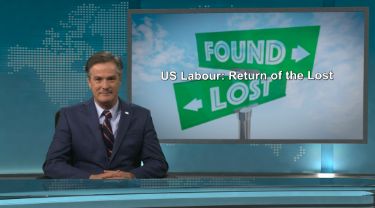They’re coming back. By the millions. Many wondered whether or not we would ever see this day, but it has arrived. Workers in the U.S. that were thrust out of the labour market by the Great Recession were joined year after year by others who couldn’t find work in the sluggish post-recession phase. Eight years on, there was no real change to the trend, and many analysts were resigned to this as a sort of permanent state. It sure looked that way, and the explanations were compelling. But displaced workers have since flooded back into the market. What happened?
The turn of events since early 2016 has been nothing short of remarkable. Labour force participation had been on a one-way downward ride since 2008, clear across the age spectrum, and definitely long enough to look like a nasty new trend. It flew in the face of logic: the unemployment rate was dropping as if the economy was getting back on its feet, but employees were being flung aside as if the recession were deepening. It was perplexing; few if any had seen anything like it. But without any significant economic ignition point, any new policy or program, the trend about-faced three years ago, and things are looking sort of normal again.
Go down a layer or two and the story is even more remarkable. Think about new graduates: in some cases, they were asked to wait up to seven or eight years for their first meaningful job. That’s not just a long chunk of the average life; it’s an even larger chunk of the average worklife. By now, these should have long since given up hope of a job in their field, resigned to taking whatever they can find, and no doubt cynical. Well, as of April, their participation rate is now just 0.7% shy of the previous peak.
What about the mid-career set? Their predicament was arguably even more dire. Wrench them out of their work, leave them on the side for anywhere up to eight years, and, well, who really wants them anymore? Skills have atrophied, and technology has supposedly bypassed this crowd. Well, guess again—the 45- to 54-year-olds have leapt back into the labour force, and are now just a half percentage point from the previous 2007-2008 peak of their participation levels.
Even fewer would expect older workers in the 55- to 64-year-old group to have a second chance. First, they are closer to retirement anyway. Second, skill atrophy would likely be relatively greater for them. Third, the progress of technology is more likely to leave this group behind. It’s interesting that, despite these hurdles older workers actually experienced a less pronounced drop in participation; and while these had less ground to make up, their participation rate has surged in synch with the others anyway.
One group that is less caught up in the trend is the 35- to 44-year-old cohort. They experienced a similar long slide in participation, and while rates have begun to recover in line with the others, they are still less than halfway back. It’s hard to explain why this group is lagging behind the others, as notionally they ought to have some advantage over the older set. Of course, it’s possible that older workers used their experience as an advantage to hold on to their positions, and to reclaim them more quickly than the 35- to 44-year-old set. But that doesn’t explain why the group younger than them has zoomed back in. As such, this particular group is a bit of a mystery—but at the same time, they represent a ready pool of potential workers if the U.S. employment juggernaut continues.
Regardless of how this re-entry is interpreted, it is a potent later-in-the-cycle shot in the arm for the U.S. economy. Why? Well, principally because most of these labour force re-entrants are going from zero incomes to something much more substantial. What that means is that even as real wage growth is moderate, total income is swelling at a higher clip. This has been powering consumer spending forward in a sustainable way, and holds out hope that the U.S. economy will finally see its long-awaited housing market recovery.
The bottom line?
Some worry that the U.S. economy is in the last throes of the current cycle. At the same time, there has been a multi-year influx of millions of labour force re-entrants, augmenting growth in consumer spending today and into the near-term future. And there is more to come—long live U.S. domestic growth!
This commentary is presented for informational purposes only. It’s not intended to be a comprehensive or detailed statement on any subject and no representations or warranties, express or implied, are made as to its accuracy, timeliness or completeness. Nothing in this commentary is intended to provide financial, legal, accounting or tax advice nor should it be relied upon. EDC nor the author is liable whatsoever for any loss or damage caused by, or resulting from, any use of or any inaccuracies, errors or omissions in the information provided.





